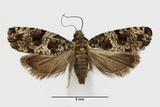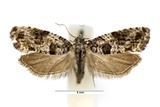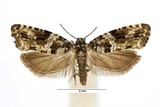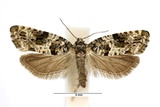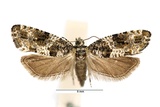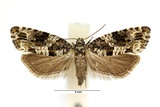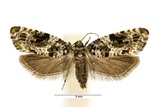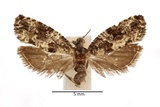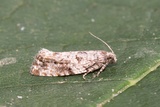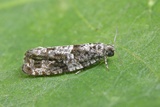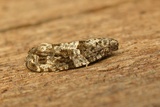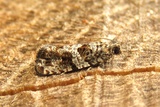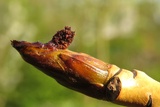Gypsonoma oppressana (Treitschke, 1835) Species
Last modified: Nov. 24, 2025, 5:38 p.m.
A not so common species throughout Belgium, mainly recorded from the north of the country.
Details
- Classification
- Family: Tortricidae > Subfamily: Olethreutinae > Tribus: Eucosmini > Genus: Gypsonoma > Species: Gypsonoma oppressana
- Vernacular names
- Zwarte populierenbladroller (NL), Poplar Shoot, Mottled Grey Tortrix (EN), Grauer Pappelknospenwickler (DE)
- First mention in Belgium
- De Fré Ch. 1858. Catalogue des Microlépidoptères de la Belgique. — Annales de la Société entomologique belge 2: 45–162. On page 81.
- Status
-
Native
Distribution
Bionomics
Initially, the young larva makes a short, lower or upper surface corridor that lies against the midrib, and often follows a lateral vein for a short distance. The mine continues in a tube of silk covered with a lot of frass on the underside of the leaf, from which the larva carries out lower-sided window feeding. The larva then overwinters, and in spring feeds internally on leaf buds. Inhabited buds are recognizable by small brown droppings protruding slightly curved from the bud
The larva hibernates. Pupation in a flimsy cocoon in the soil or in moss at the foot of the trunks.
The adults are active towards sunset and come to light.
Flight periods
The adults fly onwards from mid-May towards late August.
Observed on
- Host plant (genera):
- Populus
The larva lives on Populus nigra, Populus nigra var. italica, Populus alba, Populus x canadensis and Populus balsamifera.
Habitat
It occurs in gardens, parks, open woodland, meadows where poplars grow.
